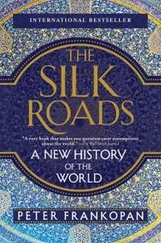They have many distinctive points in common. They have consonants pronounced with constriction of the throat (said to be glottalised or pharyngealised). Feminine words end in - at. There are only two or three cases in noun inflexion; there is an ending in - ī to make adjectives, and a prefix m - to make nouns; there is distinction in verbal forms between dynamic and stative tenses—dynamic have prefixes to mark the persons, but stative have suffixes. Above all, Semitic languages are highly inflected, using a distinctive system in which the consonantal skeleton of the word has a meaning independent of the varying patterns of vowels and consonants that may come between them: to give the simplest of examples, in Akkadian, the root k-š-d , ‘catch’, can be discerned in kašādu , ‘to attain, catch’, ikaššadu , ‘they were catching’, kišidtu , ‘booty’, and kuššudu , ‘captured’, just as š-p-r , ‘order’, is reflected in šapāru , ‘to send, rule, write’, and šipirtu , ‘mission, letter’, and š-l-m , ‘rest’, in šalāmu , ‘to be well’, šalimtu , ‘peace’, and šulmu , ‘peace, greeting, rest, sunset’.
Besides covering the major languages of the ancient and modern Middle East, the Semitic group also takes in some of the most populous languages of Ethiopia and Eritrea, including Amharic, Tigre, Tigrinya and the ancient language of the Ethiopian Church, Ge’ez.
These Semitic languages in fact share most of these properties with a larger group, called Afro-Asiatic or Hamito-Semitic, which includes Egyptian, Berber and some language families spoken farther south, Cushitic, Omotic and Chadic (including the now vast Hausa language). They are all spoken in northerly parts of Africa, and the usual assumption is that this is the primeval home of the Semitic languages too. There is in fact some indirect evidence of a mass movement of tribes at a prehistoric date, rather than simple diffusion of the languages among neighbours: in certain ways Akkadian and Ethiopic are more alike than their intervening Semitic cousins; and the rampant desertification of the Sahara c. 3500 BC would have provided a fair motive to be moving out of North Africa. [243] Lipiński (1997: 42-4).
At any rate, by the time we first encounter them in their own historical record, about 2400 BC, [9] The first Semitic names (in fact from Akkadian) appear even earlier, in Sumerian documents c. 2800 BC (Caplice 1988: 3).
there are Semitic language speakers (and by the nature of the evidence, writers) in centres dotted along the northern edge of the Fertile Crescent, pretty much on the borders of modern Syria, from Ebla (60 kilometres south of Aleppo) through Nabada (Tell Beydar, 20 kilometres north of Al Hasake) and down to Mari on the Euphrates (near Abu Kamal) and Kish (15 kilometres due east of Babylon). (The names of the kings who ruled at Kish suggest that it was a mixed settlement of Semites with Sumerians.) All these communities were steadfastly using Sumerian logograms as the staple of their cuneiform script, but the language is discernibly Semitic, written with phonetic symbols to show the verb and noun endings and function words, and in a different word order from Sumerian. There are also bilingual school texts which specify how at least some of the Sumerian logograms should be pronounced. The language of Ebla does not seem to be written very consistently, and is in general difficult to differentiate from early forms of Akkadian, occurring in Kish and down in Sumer after the conquests of Sargon I in the twenty-fourth century.
These conquests are the first historical evidence of political unification, but mostly they unified people who were already speaking closely related Semitic dialects. The language history of the Middle East opens therefore with its leading player already on stage, Semitic written in Sumerian cuneiform. We do not know how the Semitic speakers had got there, how their remarkably unified dialects (or languages) had spread out to cover the whole Fertile Crescent. On the map, the deserts of Syria and Arabia look like good central points from which to start an expansion—but they seem inconceivable as areas in which to bring up the necessary large surplus populations.
As one result of Semitic language persistence, it can be shown that counting to ten has hardly changed here in over four thousand years, or two hundred generations: [10] Pronounce š as English ‘sh’, h as the sound for blowing on glasses to mist them, θ as English ‘th’ in thin , ‘ as the clearing of a throat, ā as a long ‘a’ as in father , and ē as the long ‘e’ in Beethoven.
The story in brief: Language leapfrog

’al thaẖšwî la ’rabî yāmš ūlṣîdōnî bārš kî ’šbîdathem prîsš
Do not show an Arab the sea nor a Sidonian the desert; for their work is different.
Aramaic: Proverbs of Ahiqar, 110 [244] The Words of Ahiqar, col. xiv, 208-23; text from Lindenberger (1983: 209), with vowels supplied by Peter T. Daniels; trans. from Pritchard (1969: 430).
The language history of the Near East—more objectively, of South-West Asia—does not need to be reconstructed: it is told in its own documents, from the late fourth millennium BC. It is brimming with interesting details, especially with linguistic and cultural firsts, but there are so many twists and turns in a narrative that takes in five thousand years that it is hard to keep one’s bearings. We shall start with a very brief run-through of the major players, from Sumerian to Arabic, situating them around the central area of the Fertile Crescent from Iraq to Palestine; then we return to look in more detail at their particular contributions to our understanding of languages through time.
The overall focus of the story is on its pulsating centre at the mouth of the Euphrates on the Persian Gulf. As the centuries roll by, the centre’s influence expands, first north, then westward, and neighbouring peoples come to take an interest, creating new, and often stronger, centres of their own, until the story becomes a struggle between the contending influence (and languages) of Mesopotamia, Anatolia, Iran and Syria; and the frame of reference has expanded to the borders of Greece and Egypt in the west, and Afghanistan and India in the east. The finale comes not once but twice, in two sweeping conquests that lead to linguistic cataclysm, first by Greek from the north, and then by Arabic from the south.
When the story opens, there are two cultures with the skill of writing, next door to each other in the upper reaches of the Persian Gulf: Sumer, the Biblical ‘land of Shin‘ar’ at the confluence of the Tigris and Euphrates rivers, and Elam, across the marshes to the east, between the Zagros mountains and the sea. Each was not so much a state as a gathering of towns and villages of people speaking a common language. The origins of Sumerian are quite unknown; Elamite, however, appears to be related to Dravidian, and so linked anciently with Brahui, still spoken by over 2 million in the west of Pakistan, and many more languages spoken in central and southern India. [245] The evidence is in the Elamite pronoun system, and some features of noun and verb morphology; Diakonoff (1985: 3); McAlpin (1981). But the attribution is still controversial.
Both these cultures seem to have invented their writing systems independently, and approximately at the same time (around the thirty-first century BC). But Sumer was destined for a much more influential history than Elam. Elam did retain its language for over three thousand years (it was one of the three official media of the Persian empire in the late first millennium), yet already around 2400 Elamite is found written in Sumerian-style cuneiform, and its local script died out in the next couple of centuries. This cultural spread of Sumerian writing was actually occurring all over the Fertile Crescent: likewise by 2400 we find Sumerian words and cuneiform symbols common in inscriptions in Ebla, 1000 kilometres away on the Mediterranean coast of modern Syria. Eblaite was a Semitic language, like Akkadian, with a sound system and a morphological structure that, from a modern standpoint, makes Sumerian really quite awkward as a basis for writing: nevertheless the expressive power of Sumerian symbols was irresistible.
Читать дальше












